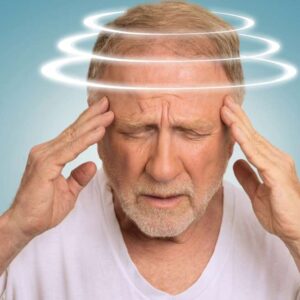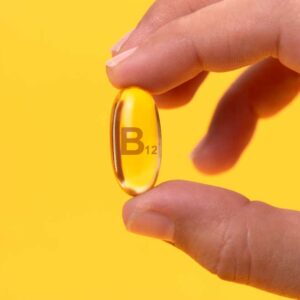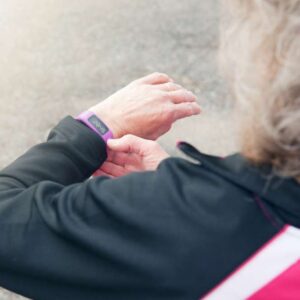
Hit the Blood Sugar “Sweet Spot” (and STAY!)
When you’re diabetic it seems like EVERYONE (you, your loved ones, your doctor, and heck, sometimes even perfect strangers) become laser-focused on your DAILY blood sugar readings.
And they are an important indicator of how you’re doing, of course. But yesterday I revealed the best way to get a TRUE handle on the disease. And that’s by tracking your hemoglobin a1c (a1c).
The hemoglobin a1c (a1c) is a simple blood test that measures your average blood sugar levels over the last three months.
Focusing on this ONE number can give you the BEST control and the lowest possible risk of heart problems and other diabetes-linked complications.
Today, I’ll reveal the “a1C sweet spot,” according to a breakthrough Korean study… and three simple steps to reach it and STAY there.
When you don’t have diabetes, you want your A1c to be below 5.7 percent. The higher it gets above that, the more likely you’ll develop the disease. But if it’s above 6.5 percent on two different tests, you’re officially a member of the diabetes club.
And that’s where things can get tricky. Because once you HAVE diabetes, the targets are all over the place.
The American Diabetes Association, for example, says you should keep it below 7 percent. A report from Harvard stated anywhere in the 7 to 8 percent range is fine in most cases. And different docs have their own range of what they’ll accept for their patients.
But let’s step back to get a little perspective. When you have diabetes, the goal isn’t to simply hit a number, of course. It’s to stay alive and healthy.
That’s where this study shines. Because it identifies the specific A1c threshold that can send your chances of surviving and thriving—DESPITE your diabetes diagnosis—soaring.
The goal is 6.8 percent. If you fall below that when you have your a1c checked, you’re doing great. Above that, the risks start to climb. And when you hit 7 percent, your odds of a heart attack jump by 27 percent and stroke by 28 percent.
If you haven’t yet tried to reverse your diabetes, it’s worth a try. With a few simple steps, you can send your a1C plummeting and you may no longer need to take all those meds.
- First up is diet, of course. Eliminate added sugars, slash carbohydrates, and dump ultra-processed foods. A low-carb “keto” style diet is perfect for this. On the keto diet, you drastically reduce your sugar and carbohydrates.
- Next, incorporate some exercise into your daily routine. But remember, that doesn’t mean you have to turn into a gym rat or sweat it out for hours. A brisk walk to run errands or a guided yoga or stretching routine you find on YouTube counts, too.
- And finally, add in some natural blood-sugar-supporting supplements such as berberine, chromium, and cinnamon extract.
This approach can dramatically reduce your blood sugar, pushing your a1c into that golden zone of 6.8 percent or less. And instead of needing more drugs to control your diabetes, you might even be able to reduce or TRASH the ones you’re taking.
But don’t do this alone. Keep your doc in the loop. He can monitor your progress and help you adjust your meds along the way.
P.S. Lucky #13 slashes diabetes risk 40%!
Source:
“Association of Prestroke Glycemic Control With Vascular Events During 1-Year Follow-up,” Neurology, 8.21, 10.1212/WNL.0000000000012729; DOI: 10.1212/WNL.0000000000012729
Written By Dr. Scott Olson, ND
Nearly 25 years ago, failed mainstream medical treatments left Dr. Olson in constant pain – and his health in ruins. And that’s when he did something REVOLUTIONARY. He began his career in medicine – and dedicated his life to uncovering the true, underlying causes of disease.
Through his innovative medical practices in Tennessee and Colorado, Dr. Olson has helped cure countless seniors from across America of arthritis… heart disease… diabetes… and even cancer. All without risky prescription drugs or painful surgeries.
View More Free Articles
Four Carbs that Could Add YEARS to Your Life
You’ve likely been avoiding carbs like the plague. Health gurus, fitness influencers, and diet books have convinced you that carbs are the enemy—that they spike your blood sugar, pack on pounds, and fast-track you to diabetes. So you’ve eliminated bread, sworn off pasta, and feel guilty just touching a piece of fruit. But what if...
Upgrade from Bananas and Apples to These Powerhouse Fruits
I’m often asked which fruits are the best. So, let’s talk about it. I’ll cut right to the chase: berries win this contest hands down. If you’re limiting your options to apples and bananas, you’re missing out on a universe of superior antioxidant power. Those everyday fruits are like bringing a knife to a gunfight...
The REAL Reason Americans are Getting “Fatter”
You’ve heard it a thousand times: “Americans are getting fatter because we’re lazy.” We sit at desks all day. We binge-watch Netflix instead of hitting the gym. We’ve traded physical labor for sedentary lifestyles. It’s a tidy explanation for why obesity has skyrocketed in developed countries. There’s just one problem—it’s completely wrong… A groundbreaking Duke...
Mailbag: Room Won't Stop Spinning? Do THIS First
“I’m dealing with vertigo issues, lightheadedness, and dizziness. As recently as this last Saturday I had multiple occurrences throughout the day. Is there anything I can do for this? I’m 69 and in good health. I work out 4 to 5 times a week.” —Spinning Hi Spinning, When patients approach me with similar complaints, I...
Hidden Number Secretly Sabotages Male Performance
Guys (and gals that love them), we should talk. You know how we’ve always been told that bedroom troubles are just part of getting older—that we just need to live with them? Well, it turns out that’s not true. Scientists recently wrapped up a six-year study that followed over 100 healthy men, and the findings...
Shocking Study Links Kids' Snacks to Dangerous Early Puberty
Kids are growing up in a world vastly different from the one we knew. Back in our day, if a child wanted something sweet, it was a piece of candy or a homemade cookie. Today’s kids are surrounded by products filled with artificial sweeteners that didn’t even exist when we were raising our own children....
Outdated Vitamin Guidelines Put Your Brain at Risk
If you’re like most people, you probably don’t think twice about vitamin B12—until your doctor mentions it during a routine blood test. But new research published in the Annals of Neurology suggests we need to pay closer attention to this crucial nutrient—especially as we age. Turns out, current guidelines for this essential nutrient might be...
The TRUTH About Supplement "Liver Dangers" REVEALED
There’s been a lot of buzz lately about liver damage from supplements—so, let’s talk about it. Reports of supplement-induced liver injuries have some folks wondering, “Could my natural remedy actually be harming me?” But before you toss all your supplements in the trash, let’s separate fact from fear—and talk about how to use supplements safely....
The 10,000 Steps LIE That's Ruining Your Health
I’ll be honest—I’m a little sick of the 10,000-steps theory. You know, the one that insists you need to take at least that many steps daily to stay healthy? You won’t believe where that claim originally came from. The 10,000-steps theory wasn’t handed down from the fitness gods on stone tablets. It originated from a...
“Brain Games” Failed You? Try THIS For Better Memory Instead
You know all those brain-training apps, supplements, and “miracle” memory-boosters that promise to keep your brain sharp as you age? Here’s the truth… There IS evidence they support brain health—and that’s why I’ll be the first to recommend them. But they aren’t the most powerful brain-boosting tool available to you. Another surprising solution has earned...









